Forests in America are filled with thousands of different animals. The deeper you venture into the woods, the more likely you are to see rarer animals that shy away from human interaction. Entire ecosystems exist that most people only see on television.
Forests in rural and even suburban areas are different. Most animals you’ll see are accustomed to being around people. They may not want to get too close, but humans in the area won’t scare them out of their habitats.
If you’re in the forests, you’re likely to come across small animals and large predators. Therefore, practicing common sense and personal safety measures is important to avoid unwanted or unsafe experiences.
Here are some forest-dwelling animals you’re most likely to see in the woods around your house.
Table of Contents
1. Foxes
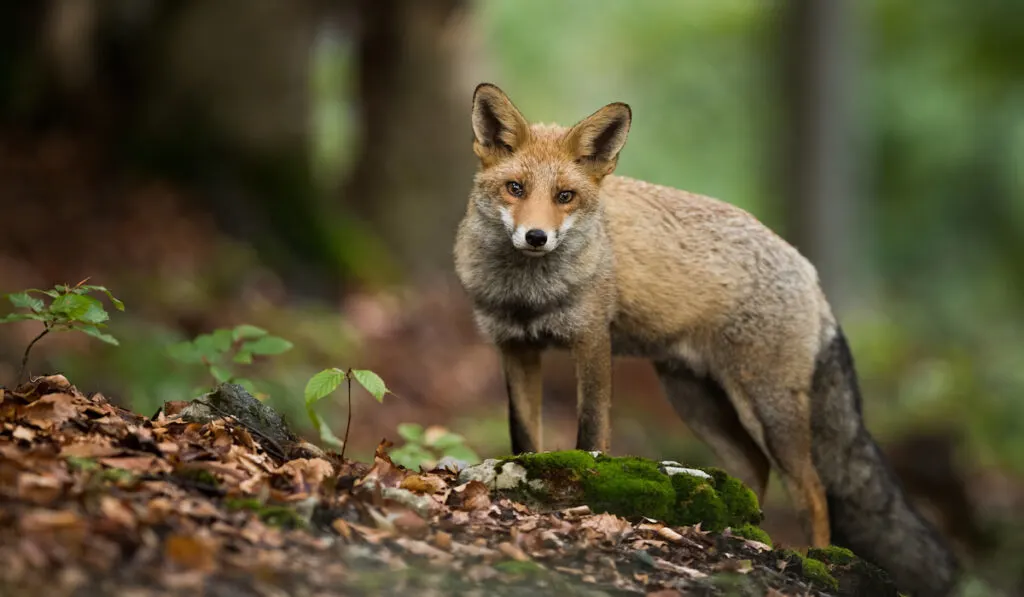
It can be rare to see a fox, but they’re in almost every forest across the United States. Foxes are timid animals that usually come out at night to hunt small rodents and other little animals. If you have chickens in the backyard, you need to take care because these animals will do their best to find a way into the coop for an easy meal.
Foxes are beautiful animals but sometimes creep into suburban developments, especially when new houses are close to known fox habitats.
2. Skunks
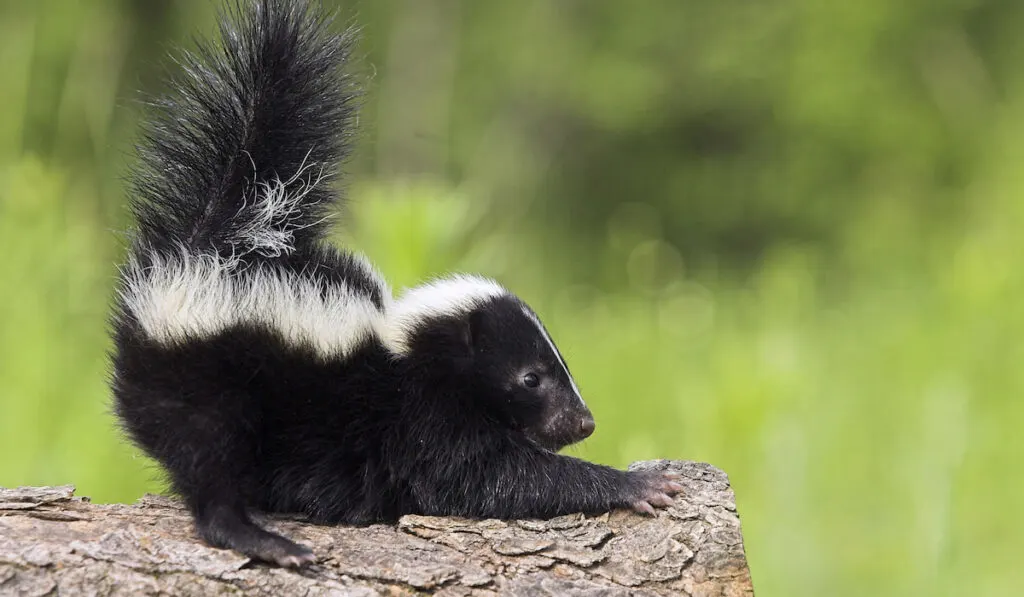
You’ll probably smell a skunk long before you see one, if you ever see them at all. Skunks spray a very foul liquid anytime they feel threatened, or a predator comes too close. If you get skunk spray on you, it’s extremely hard to get it off you.
Skunks are nocturnal animals that love to move quietly around the woods, scavenging at night. Unfortunately, a lot of skunks die every day on America’s roadways when they try to cross traffic into another area.
3. Deer
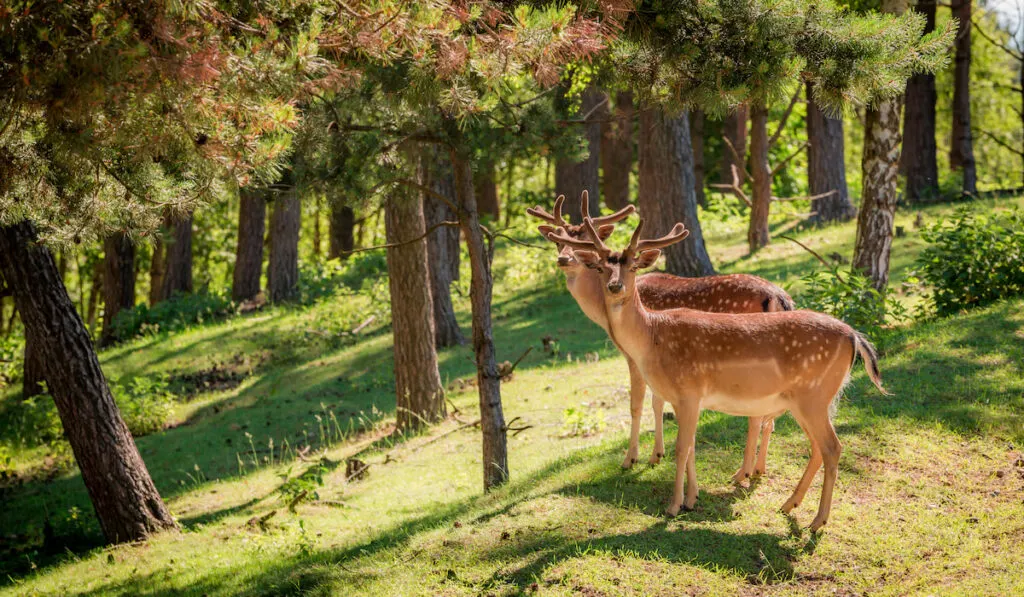
Deer occupy many rural and suburban environments in America, so much so that many people think of deer as a menace. Deer are fictionalized in cartoons and movies as friendly animals, but an adult buck can be very dangerous under the right circumstances, so it’s best to keep your distance.
If you have a garden at home that’s near a wooded area, watch out for deer. They’ll come to eat all your fresh sprouts, fruit, and even many landscape plants that you grow.
4. Squirrels
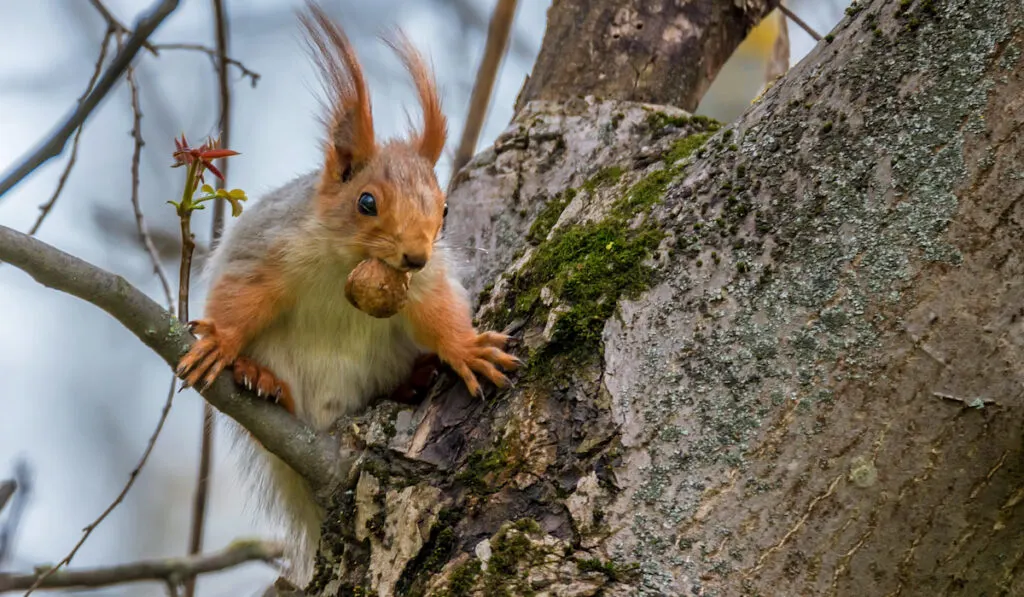
It’s no surprise that squirrels live in forests. We see them in trees in our neighborhoods, so they’re animals accustomed to being close to humans.
Many squirrels live near oak trees for their acorns and other steady food sources. Forest squirrels are usually more skittish than their suburban counterparts. You’re unlikely to get too close to a squirrel that hasn’t been around humans often.
5. Bears
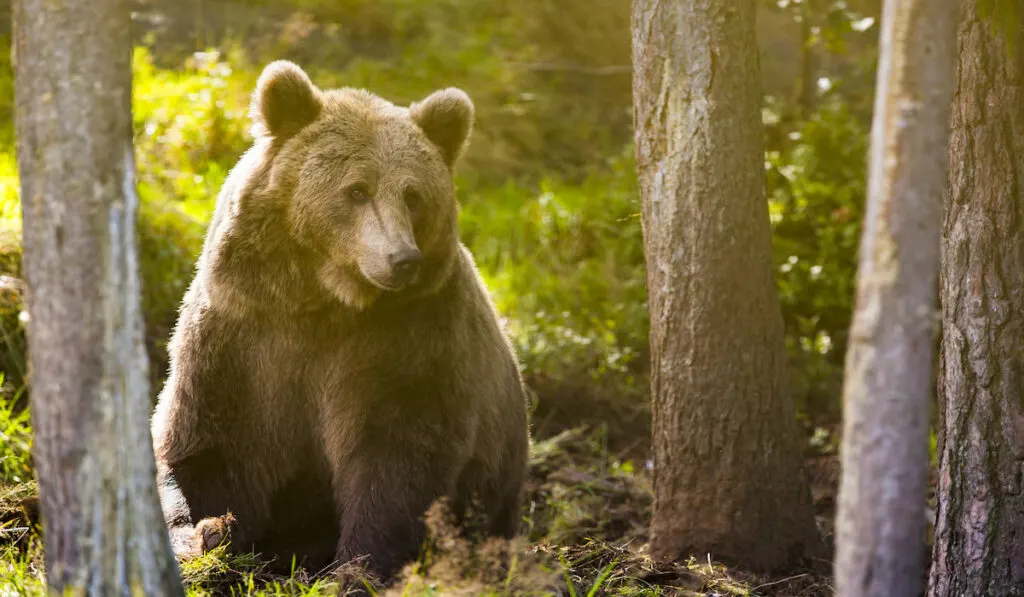
Bears are typically the largest predators in U.S. forests. On the east coast, in places like Appalachia, black bear populations are thriving, and more people report black bear encounters yearly.
You’ll see YouTube videos of black bears jumping into porches or trash dumpsters looking for food. Most of the time, black bears are not threatening to humans. They’re smaller than grizzlies and will scare easily. The main issue is whether a mother bear has cubs with her.
People regularly come across black bears on backwood trails. It’s important to stay far away and not run or panic. Keep talking in a loud voice and make yourself look larger to try and scare the bear off.
Larger brown bears, also known as grizzly bears, inhabit forests in the western United States. Brown bears are ferocious predators that present a serious safety threat to people in the area.
6. Bugs
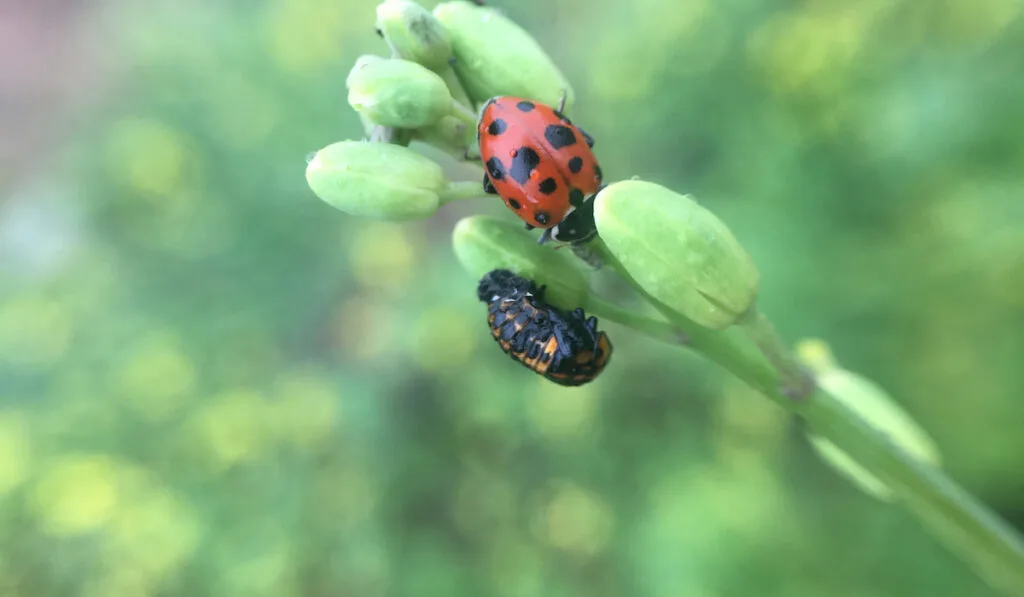
We’ll group all of these animals into one section to avoid naming all the different types of insects in the forest. The kinds of insects you’ll see can vary greatly depending on your location.
However, most American forests have plenty of butterflies, mosquitos, bees, ants, spiders, and a host of other creepy-crawly critters most people want to avoid.
7. Owls
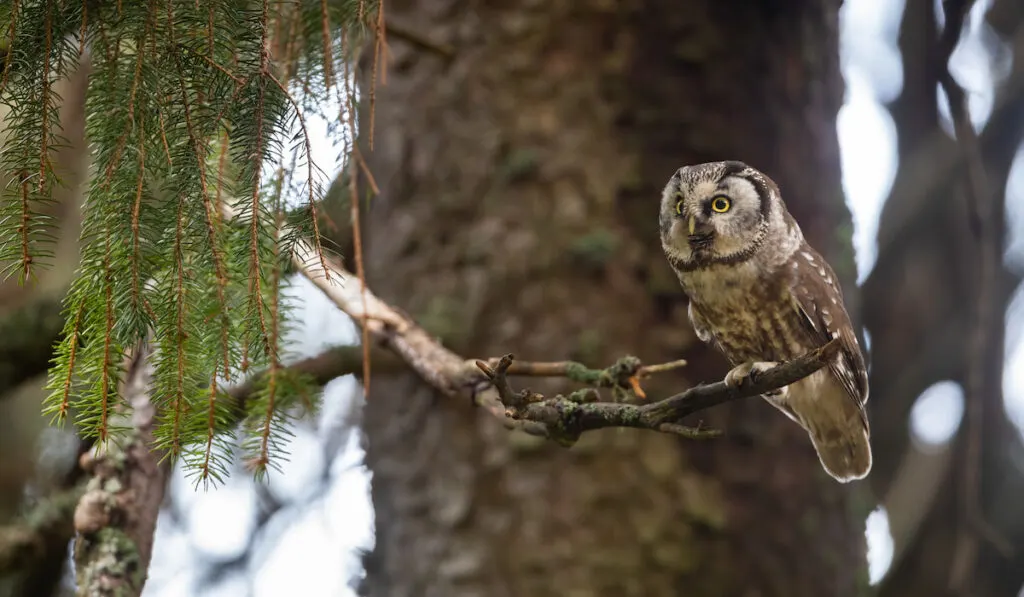
Owls are nocturnal predatory birds that live in forests. These birds are incredible hunters that can grow quite large; some have wingspans up to six feet.
Owls may look cute and friendly, but some species, like the great horned owl, are known to attack humans if they feel threatened or when humans are walking in the forest when it’s dusk or dawn.
8. Rabbits
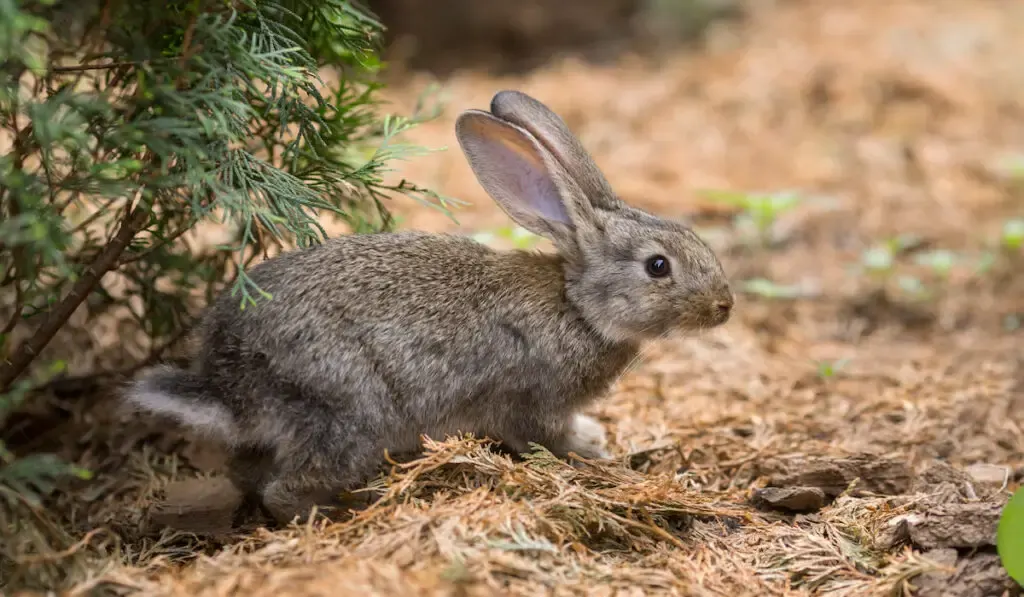
Rabbits are small, fluffy animals that live in suburban and rural America. These animals pose no danger to people. They’re essentially defenseless against predators, which makes them very flighty.
Rabbits often hide in holes and under camouflage, only coming out at night or when no people or other animals are around.
9. Snakes
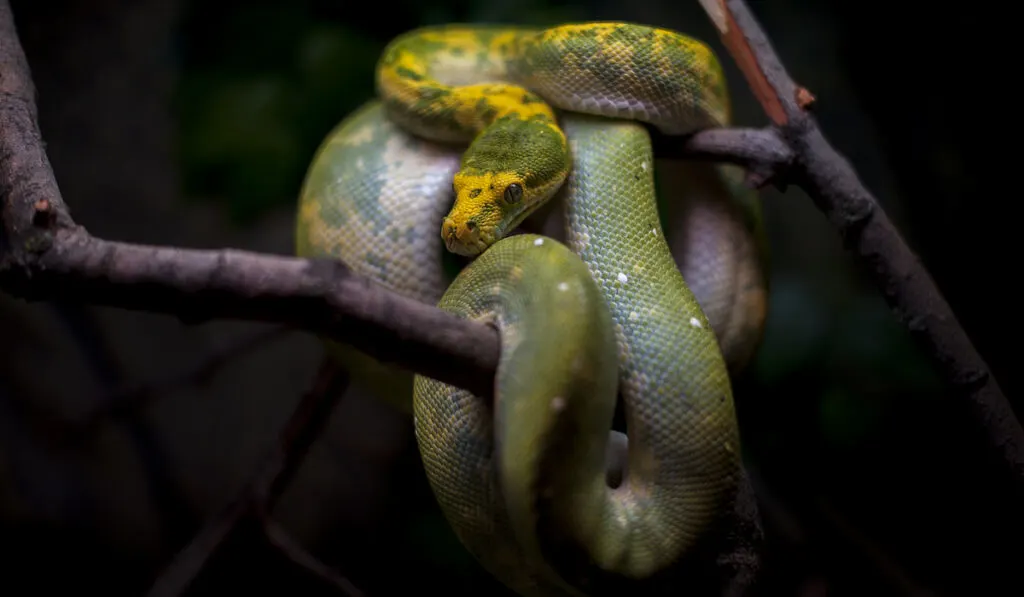
Snakes are not the first animal that comes to mind when you think of U.S. forest animals, but there are many different types of snakes in forests across the country.
If you spend enough time in the woods, you can expect to see garter snakes, rattlesnakes, copperhead snakes, and more species. In Florida, there is an explosion in local python populations from people abandoning pet snakes, which are now threatening other forest wildlife.
Hikers and campers need to be careful to avoid snakes in the forest. Snakes can be dangerous, especially when it’s hot outside, because they’ll look for shelter under tents, tables, and anything else that creates shade.
10. Birds
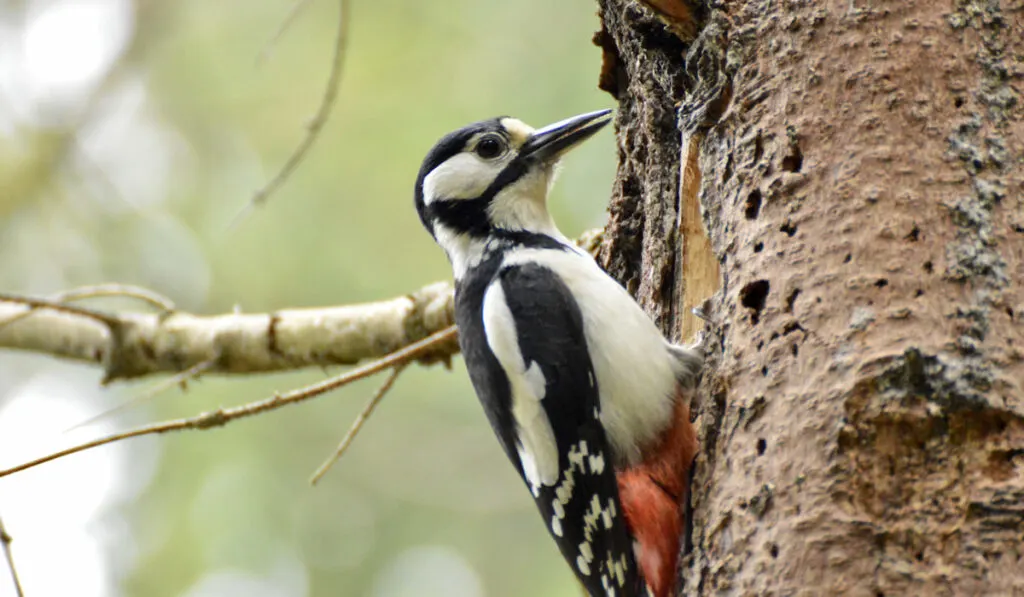
We could start listing many different species of birds, but suffice it to say that America’s forests are full of beautiful birds wherever you go. They provide a natural soundtrack for hikers and other people in the forest all day.
If you’re lucky enough, you’ll hear woodpeckers pecking trees looking for bugs or even a bald eagle nesting high up in a tree. Birds, large and small, occupy the forest and contribute to biodiversity in almost every forest habitat.
11. Raccoons
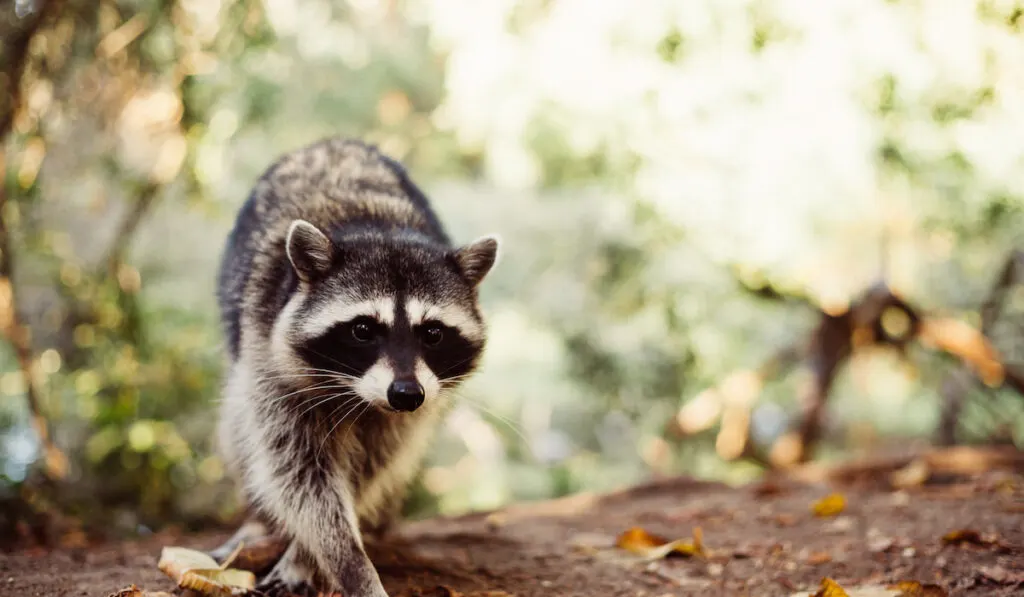
Raccoons are cunning animals that live in forests but aren’t scared to venture into areas with humans in search of food.
It’s almost incredible how smart these critters are. They find their way into storage units, sheds, and trash cans and will eat anything you mistakenly leave out overnight.
Occasionally, raccoons leave the forest and reside in chimneys, garages, or sheds. They become a disturbance that pest control companies regularly handle in neighborhoods near forests, so it’s best to make sure you don’t give them any chance to set up shop in your home.
12. Wolves
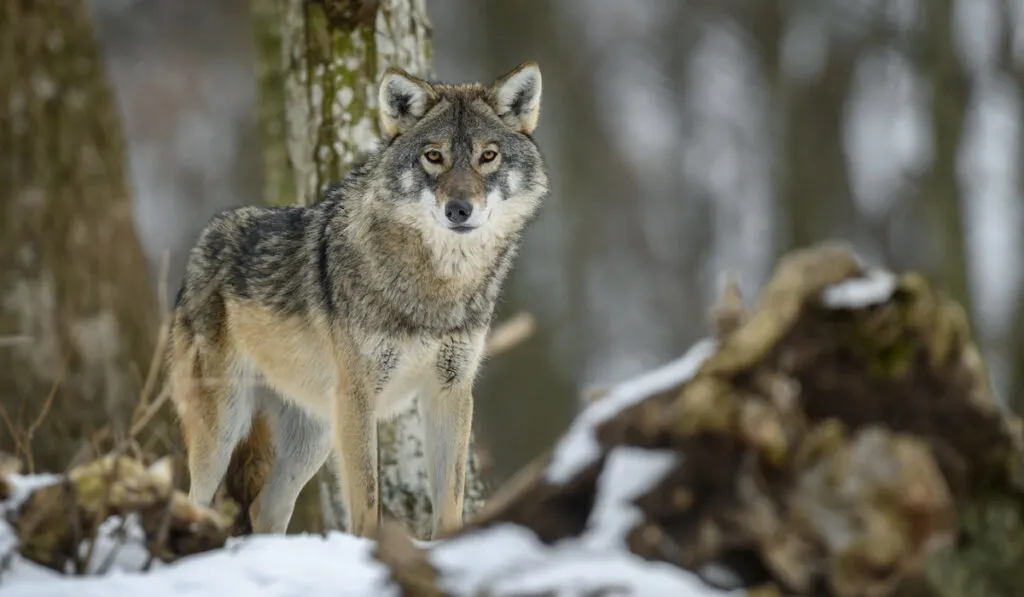
Wolf populations have waxed and waned in recent history. Lately, they’ve been making a comeback in forests in places like Colorado. They aren’t everywhere in the country, which is the way a lot of people would prefer it.
Wolves are large predators that usually run in packs. They hunt prey like deer and elk. Any encounter with wolves can be dangerous for humans, so it’s best to avoid getting too close. You will probably hear them calling before you get near them, so start moving the other way if you do.
13. Coyotes
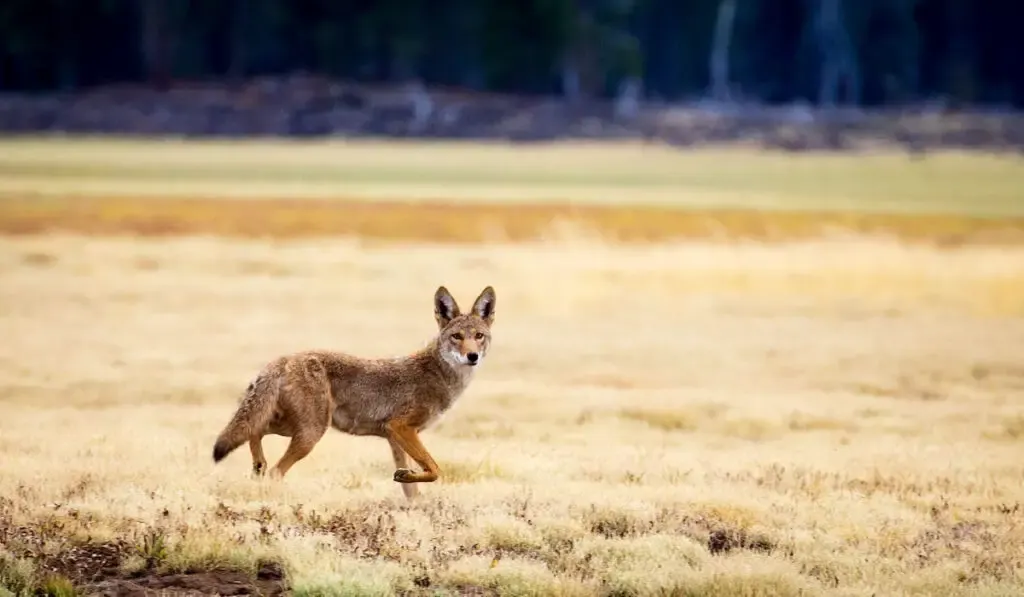
Coyotes look sort of like wolves, though they’re smaller and hunt tinier prey. Unfortunately, coyotes are very smart, which makes them bold enough to venture into residential areas looking for food.
Typically, coyotes hunt animals like mice, squirrels, and rabbits. However, this is another animal in the forest that will quickly go after any chickens you have at home.
14. Lizards
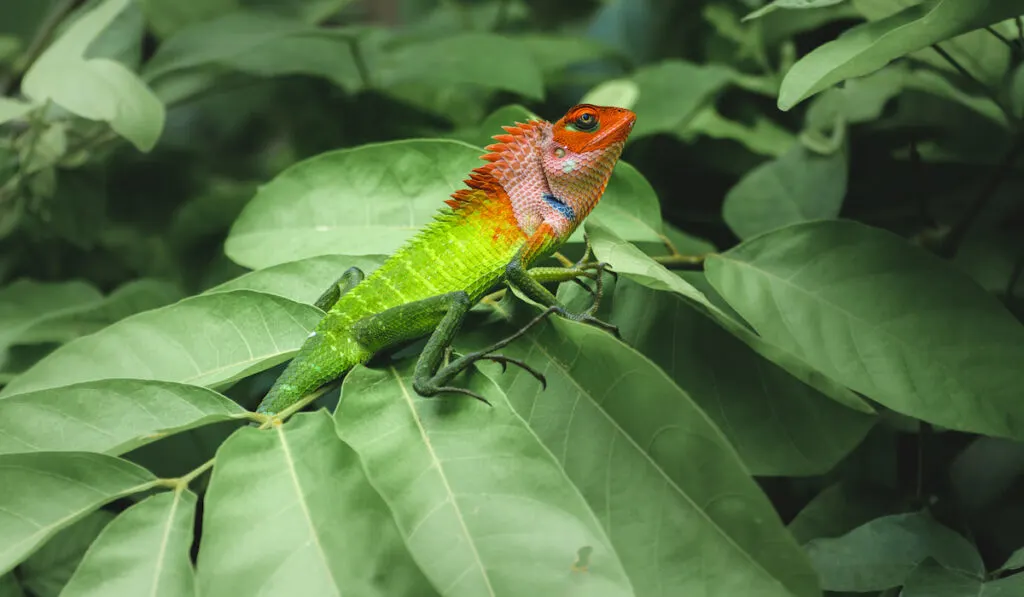
There are plenty of lizards in American forests, especially around rivers and streams deep in the woods. Forest lizards need a lot of water to survive, so you’ll typically find them under rocks where the soil is moist, cool, and dark.
15. Moose
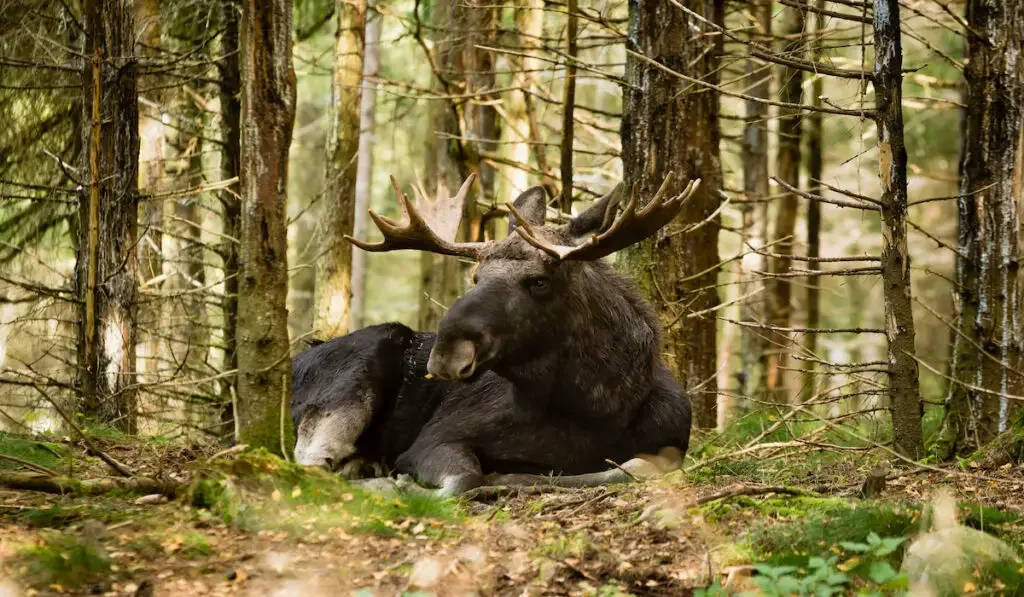
Moose are one of the biggest animals that live in U.S. forests. These amazing animals are giant and usually move around slowly as they graze on leaves, berries, and nuts.
However, don’t let their docile appearance fool you because moose can be very aggressive when they feel threatened. They’re known to rush at humans who get too close or try to get near any calves.
16. Wild Boars
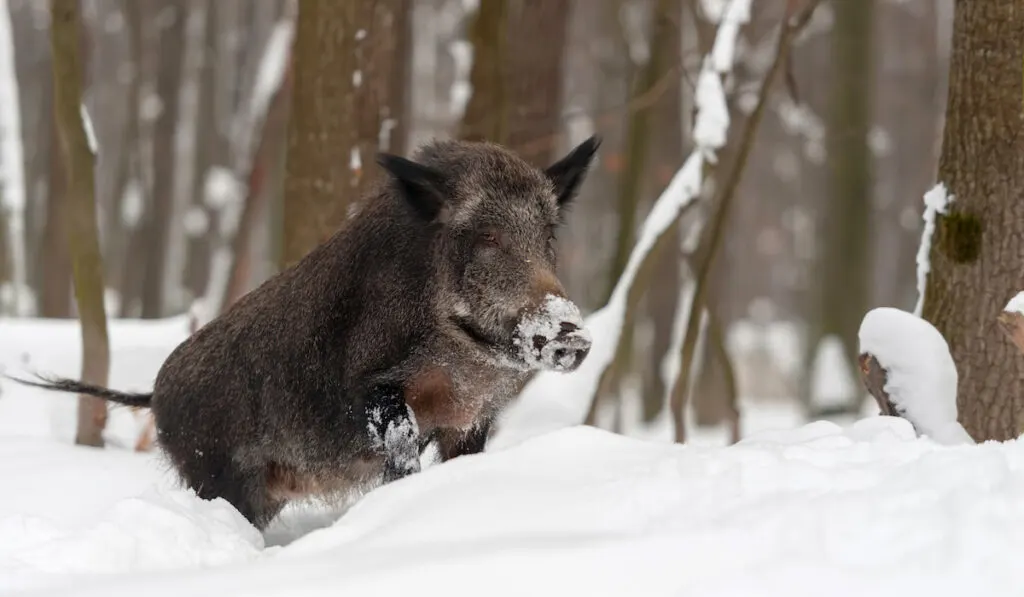
People in Texas know how big of a problem wild pigs present to farmers. Unfortunately, boars multiply very quickly, so the state has taken some drastic measures to try and get the population under control.
Boars are large animals that are very assertive. They make their way onto farms, eating all of the crops in their way before retreating into the woods. They’re also threatening to humans who get too close because they are extremely heavy and have sharp tusks.
17. Badgers
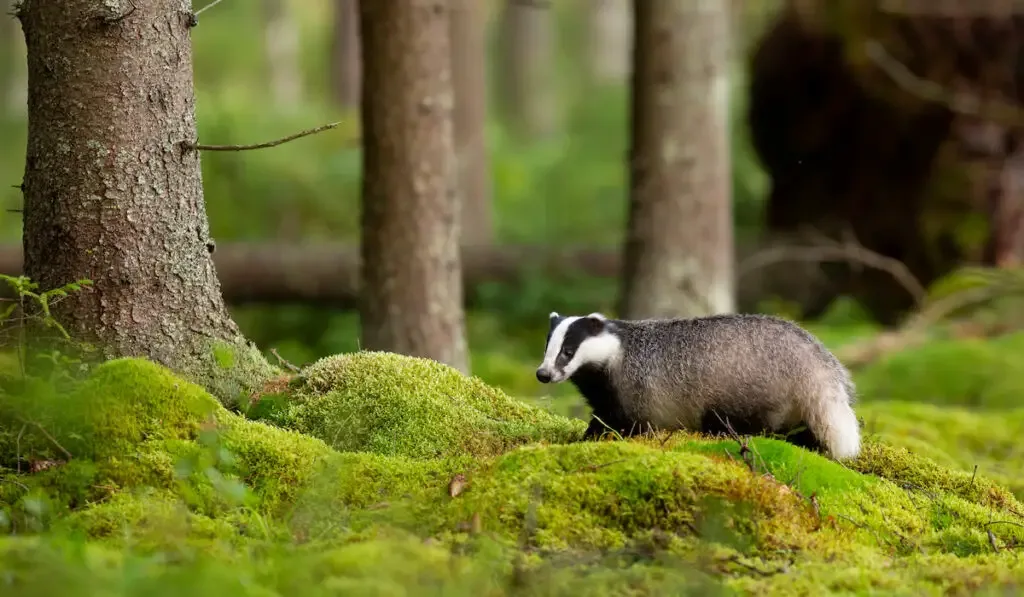
Badgers look cute, but they can be very aggressive and territorial. Badgers often scare away bears, elk, and other much larger animals because their attacks are loud and happen with great ferocity.
Luckily, most badgers live deep in the woods, so they don’t bother humans.
Final Thoughts
Several species of animals thrive in forests across the country. As long as you don’t get too close, you shouldn’t be in any danger. Enjoy any sightings, especially if you happen to get a look at a rare animal like a bald eagle, bear, or elk.
